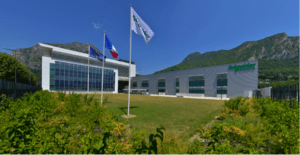DCIM and BMS tools can work together to improve management and monitoring
It has been nearly 30 years since President Ronald Reagan visited Berlin and gave a speech not far from the Berlin Wall which included this now famous passage,
“We welcome change and openness; for we believe that freedom and security go together, that the advance of human liberty can only strengthen the cause of world peace. There is one sign the Soviets can make that would be unmistakable, that would advance dramatically the cause of freedom and peace. General Secretary Gorbachev, if you seek peace, if you seek prosperity for the Soviet Union and Eastern Europe, if you seek liberalization, come here to this gate. Mr. Gorbachev, open this gate. Mr. Gorbachev, tear down this wall!”
At the risk of being melodramatic, I’ll say that Berlin Walls of isolation and non-cooperation still exist in many facilities with a data center or mission critical IT. Facility teams monitor and control their “grey space” systems with a BMS while IT operations teams focus on their chilly white space often by using DCIM tools. There exists a sort of “silo mentality” within many organizations between facilities and IT where there is little communication or visibility into the other’s realm. Upper management can be a third silo. This is a bad situation since IT is so critical to the organization and utterly dependent on power, cooling, and space resources. Given IT’s total reliance on the facility and given that IT is a customer of the facilities team, there has been much written in the industry press over recent years about the need for these two groups to work together and share information. There are forward-thinking companies that have addressed these divides through organizational change. For example, having the IT and Facility managers report into the same CxO and the two teams sharing mutual goals can go a long way in tearing down the walls. Another way is to have Facilities and IT be equal stakeholders and active participants in the planning, design, and commissioning phases of all projects impacting IT. Short of that, upper management should make it a requirement for the two sides to work together and regularly communicate. Planned work tasks from either side should be communicated ahead of time to the other. Long term capacity planning and maintenance scheduling should always be worked out together in a cooperative fashion. Relevant or important system alarms should be communicated to appropriate people on both sides. For example, if a large centralized UPS system is near capacity or is put into maintenance bypass, then IT is going to want to know that…and know which of their work loads are dependent on that UPS.
The principal means for sharing information and working together is the software management systems; i.e., the BMS, electrical power monitoring system (EPMS), and data center infrastructure management (DCIM). Modern BMS systems that are optimized for mission critical facilities have the ability to both share and receive status and alarm information with other infrastructure management systems. By supporting common, open protocols such as BACNet IP, MSTP, Modbus IP, and RTU over a standard Ethernet TCP/IP network, today’s BMS can send and receive information to and from EPMS and DCIM systems. Some BMS systems also have the ability to transmit data via Application Programming Interfaces (APIs) to host information as databases, web services, and reports. Web services APIs host raw data in formats suitable for stakeholders to create user interfaces customized to their needs. Reports are an extension of APIs that includes some manipulation of the raw data prior to delivery. These API tools allow the data, typically restricted to the BMS and its user interface, to be leveraged throughout a customer enterprise in a wide variety of applications and user interfaces. Engaging a vendor with experience providing these integration services is key to ensuring a successful implementation.
To simplify the effort to make these connections, it is important for Facilities and IT to work together in the evaluation and implementation phase. To properly evaluate software tool options, both sides should meet to define and agree on what the connected systems should do and use that output to compare solutions. The comparison should consider each solution’s ability to do what you want, as well as the effort required to make it happen. Determining this means interviewing the vendor and being specific about your requirements. Note that choosing a vendor who offers and has designed all three tool sets to work together should make the integration simpler and less error prone. For the implementation phase, both groups should agree on alarm notification policies, thresholds, and ensure the requirements from the evaluation phase make it into the actual implementation. And finally during commissioning, both sides (Facilities and IT) should witness the behavior of the system while operating and agree together on a pass or fail of the testing before it goes live.
White Paper 233, “Selecting a Building Management System (BMS) for Sites with a Data Center or IT Room” goes into more detail on how a BMS should be a connected part of the larger data center management suite. It also describes how BMS requirements are changed when there is a data center or mission critical IT present. Pitfalls of implementing these modern BMS systems are also discussed. It makes clear the importance and value of connecting facility and IT management systems so that there is a complete view of the organization’s assets from the Utility connection down to the IT server along with their dependencies on each other. Putting a spin on Reagan’s iconic quote, I say…
“We welcome change and openness; for we believe that IT availability and information sharing go together, that the advance of data center facility monitoring can only strengthen the cause of availability and efficiency. There is one sign the Managers can make that would be unmistakable, that would advance dramatically the cause of availability and efficiency. Mr. Facility and IT manager, if you seek efficiency, if you seek reliability for the facility and its mission-critical data center, if you seek openness, come here to this gate. Mr. Facility and IT manager, open this gate. Mr. Facility and IT manager, tear down this wall!”


